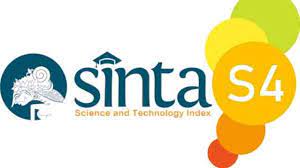THE STUDENTS' AND TEACHERS’ IMPRESSION TOWARD NEARPOD APPS IN LEARNING ENGLISH OF CURRICULUM MERDEKA PERSPECTIVES
DOI:
https://doi.org/10.51878/learning.v4i4.3453Keywords:
Digital literacy, Nearpod, TechnologyAbstract
This article discusses using an application for Education called Nearpod. Nearpod is an application with real-time insights into student understanding through interactive lessons, gamified learning, formative assessment, and other exciting activities. Nearpod can be personalized instruction for individual students, small group assignments, or homework to differentiate and allow students to work independently, which all this feature in line with the framework of Kurikulum Merdeka. This research was done by using qualitative approach. In this article, the author wants to find students' and teacher perceptions or feedback about their experience learning and teaching English by using Nearpod in the classroom. the interview was used as the instrument in collecting main data. Hence, 5 students became the sample in this research. Besides that, the author also provides the observation as the supporting data to look on how the student engage with the apps. The data were taken from a school in Tangerang, Banten province. This school has been applying of Kurikulum merdeka for 4 years. In which, this will have a strong bond between the demand in both curriculum and this app. The result of the research shows thematic dimensions of positive and negative feedbacks. Those are memory of learning retention, creativity and critical thinking, new environment experience, advantages and disadvantages for future suggestions.
Downloads
References
Abdullah, M. I., Inayati, D., & Karyawati, N. N. (2022). Nearpod use as a learning platform to improve student learning motivation in an elementary school. Journal of Education and Learning (EduLearn), 16(1), 121–129.
Flick, U. (2021). Doing interview research: The essential how to guide. Doing Interview Research, 1–100.
Friedman, N. P., & Robbins, T. W. (2022). The role of prefrontal cortex in cognitive control and executive function. Neuropsychopharmacology, 47(1), 72–89.
Hakami, M. (2020). Using Nearpod as a tool to promote active learning in higher education in a BYOD learning environment. Journal of Education and Learning, 9(1), 119–126.
Jegerski, J. (2021). Krashen and second language processing. Foreign Language Annals, 54(2), 318–323.
Junarti, J., Sholihah, H. I., Sari, R. P., Oci, M., & Sumanik, E. D. (2023). Innovation in Educational Technology to Enhance Student Learning Achievement in the Era of the Merdeka Curriculum. Indonesian Journal of Education (INJOE), 3(2), 292–309.
Nadhiroh, S., & Anshori, I. (2023). Implementasi Kurikulum Merdeka Belajar dalam Pengembangan Kemampuan Berpikir Kritis pada Pembelajaran Pendidikan Agama Islam. Fitrah: Journal of Islamic Education, 4(1), 56–68.
Ortega, L. (2011). Second language acquisition. In The Routledge handbook of applied linguistics. Routledge.
Park, M., & Son, J.-B. (2022). Pre-service EFL teachers’ readiness in computer-assisted language learning and teaching. Asia Pacific Journal of Education, 42(2), 320–334.
Pratama, M. P., Sampelolo, R., & Lura, H. (2023). Revolutionizing education: harnessing the power of artificial intelligence for personalized learning. Klasikal: Journal of Education, Language Teaching and Science, 5(2), 350–357.
Qi, Y., Shen, E., & Xue, S. (2021a). Applying Nearpod to 11th Grade to Improve Classroom Interactions. 2021 4th International Conference on Humanities Education and Social Sciences (ICHESS 2021), 1791–1796.
Qi, Y., Shen, E., & Xue, S. (2021b). Applying Nearpod to 11th Grade to Improve Classroom Interactions. 2021 4th International Conference on Humanities Education and Social Sciences (ICHESS 2021), 1791–1796.
Sanmugam, M., Selvarajoo, A., Ramayah, B., & Lee, K. W. (2019). Use of Nearpod as interactive learning method. Inted2019 Proceedings, 8908–8915.
Scherer, R., Siddiq, F., & Tondeur, J. (2019). The technology acceptance model (TAM): A meta-analytic structural equation modeling approach to explaining teachers’ adoption of digital technology in education. Computers & Education, 128, 13–35.
Shadiev, R., & Yang, M. (2020). Review of studies on technology-enhanced language learning and teaching. Sustainability, 12(2), 524.
Xin, W., & Chan, J. R. (2020). Myelin plasticity: sculpting circuits in learning and memory. Nature Reviews Neuroscience, 21(12), 682–694.
Zaccarella, E., Papitto, G., & Friederici, A. D. (2021). Language and action in Broca’s area: Computational differentiation and cortical segregation. Brain and Cognition, 147, 105651.
Downloads
Published
How to Cite
Issue
Section
License
Copyright (c) 2024 LEARNING : Jurnal Inovasi Penelitian Pendidikan dan Pembelajaran

This work is licensed under a Creative Commons Attribution-ShareAlike 4.0 International License.
















